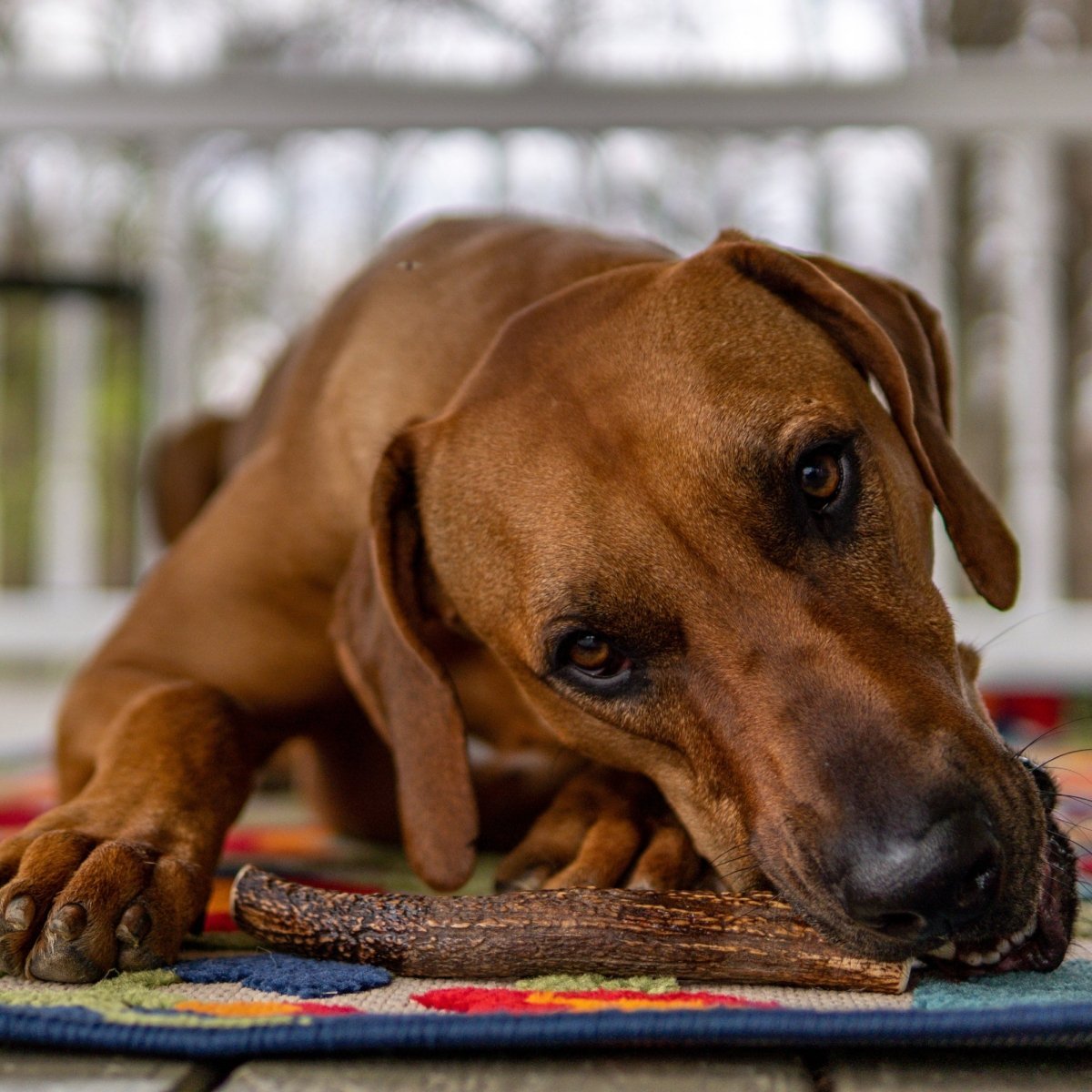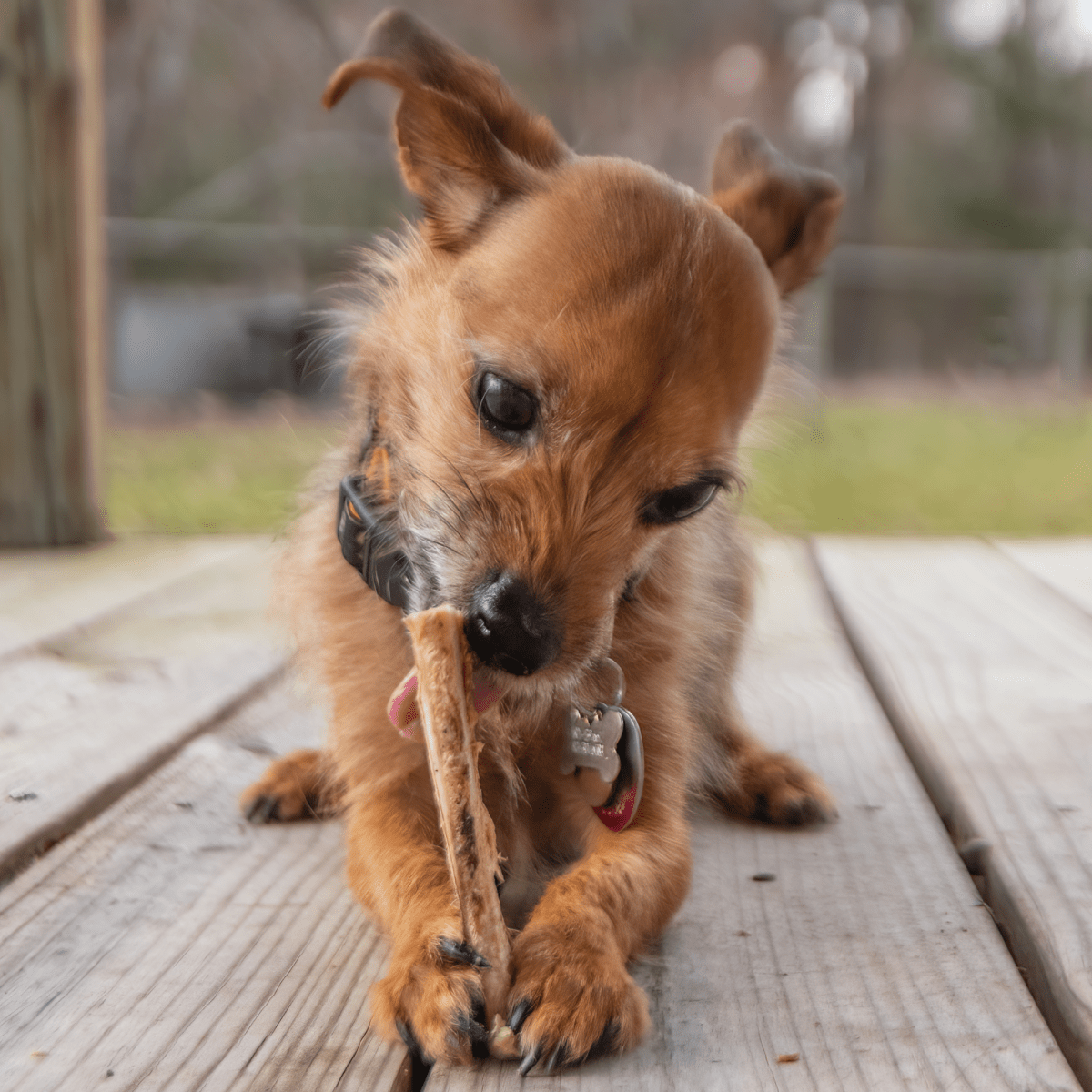
Your pup's been eyeing that rawhide bone for the third day straight, and you're wondering if there's something better out there. You’ve probably even thought, "Are antlers good for dogs?” Or, “Are antlers safe for dogs?" The short answer is yes – when you pick the right ones and know what to look for.
The best antlers come from deer and elk that naturally shed them each year. No animals are harmed in the process – it's just like collecting fallen leaves, except way more exciting for your dog.
When considering whether deer antlers are suitable for dogs, quality is of paramount importance. You want antlers that have been properly cleaned and prepared, without any chemicals or weird additives. They should look natural and smell, well, like nothing much at all.
Split antlers are often a great starting point because they're softer than whole antlers. The exposed marrow inside is like a special treat that most dogs go crazy for, making the antler less intimidating for first-time chewers.
Let's discuss why many dog parents are making the switch from other dog bones to antlers. First off, they're incredibly long-lasting. While your dog might demolish a regular treat in minutes, a good antler can keep them busy for weeks or even months.
Your dog gets nutrients like calcium and phosphorus while doing what they love most – chewing.
The dental benefits are also quite impressive. As your dog gnaws away, the antler naturally scrapes plaque and tartar off their teeth. Think of it as a toothbrush they actually want to use.
If you've got a dog who turns your favorite shoes into confetti when bored, antlers might just save your sanity (and your belongings).
Are deer antlers for dogs safe? Yes, but antlers aren't right for every dog. The biggest concern? They can be quite challenging, which may cause problems for dogs with sensitive teeth or older pups with dental issues.
You'll also want to watch out for aggressive chewers who might try to bite off more than they can handle. Some dogs become so excited about their new chew that they overexert themselves and risk chipping a tooth.
Splintering is another thing to watch out for, although quality antlers rarely exhibit this issue.
Size is everything when it comes to dog bone safety. You need something that's definitely too big for your dog to swallow – think bigger than their mouth when they open it wide.
Take a good look at how your dog normally chews. Does your pup nibble delicately, or do they attack chew toys like they're conquering enemies? Gentle chewers do well with split antlers, while power chewers might need something denser to keep them interested.
Age and dental health also play a huge role, too. Senior dogs or those with tooth sensitivity should stick with softer options, while healthy adult dogs can usually handle whatever you throw at them.
Elk antler chewing sessions offer something a little different. Since they’re denser than deer antlers, they hold up better for large breeds.
The texture is slightly different, too – some dogs prefer elk over deer, while others are the opposite. It's similar to how some people prefer vanilla ice cream, while others are devoted to chocolate.
Elk antlers pack the same nutritional punch as deer antlers but often last longer due to their size and density. If you've got a German Shepherd or Lab who treats regular chews like appetizers, elk antlers might be your answer.
Good antlers come from wild deer and elk, which naturally shed them every year. It's nature's way of recycling – the animals grow new ones, and we collect the old ones for our dogs to enjoy.
The best suppliers know exactly where their antlers come from and can tell you about the animals' environment and health. You want antlers from clean, natural habitats where the animals roam freely and eat well.
Avoid antlers from questionable sources or those that seem too cheap – quality costs a bit more, but it's worth it for your dog's safety and enjoyment.
Here's a simple rule: the antler should be bigger than your dog's mouth. If they can fit the whole thing inside their mouth, it's too small and could become a choking hazard.
Different antlers have different densities, even within the same type. Some are rock-hard, while others have a bit more give. If you're unsure about what your dog prefers, start somewhere in the middle and adjust from there.
Many antlers have varying densities throughout, with harder outer layers and softer inner layers. This gives your dog different textures to work with as they chew their way through.
Comments will be approved before showing up.

Choosing the perfect chew for your small dog can be tough, as it's not a one-size-fits-all situation. Learn about the best chew bones for your small dog here!

Beyond the obvious appeal, jerky has earned its reputation as one of the most beloved dog treats for some pretty solid reasons. It's not just about the taste (though that certainly doesn't hurt).